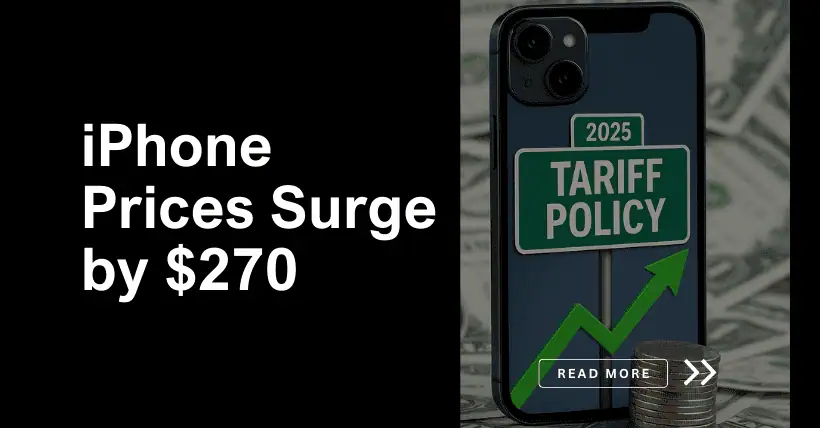
According to industry sources, the tariff policy has once again pushed Apple into the spotlight.
iPhones may face a dramatic increase in costs due to a potential tariff of up to 54%, directly challenging the global supply chain and profitability model.
This forces Apple to make tough decisions between sacrificing profits, shifting costs, or accelerating supply chain adjustments, with far-reaching consequences.
The assembly and testing cost of the iPhone 16 Pro (256GB) is about $580.
Compared to the $1,100 retail price, the profit margin is quite high.
Imposing a tariff as high as 54% could cause a significant shift in this cost structure.
Considering the iPhone’s assembly in China and some parts sourced from there, analysts estimate the cost could rise to $850, an increase of $270.
This would severely impact Apple’s profits, and even after accounting for other operating expenses, it would pose a major threat to overall profitability.
Apple faces a dilemma: maintaining the price would significantly reduce profits, affecting company operations and investor confidence; a substantial price hike (possibly over $200) to shift costs would inevitably impact market demand, especially in the highly competitive smartphone market.
Although iPhones are labeled as assembled in China, their internal components come from a highly globalized supply network, not just from China.
Core chips:
The key processor is designed by Apple and manufactured by TSMC.
Memory and screens: Memory chips primarily come from Samsung, SK Hynix, and Kioxia.
OLED screens: Samsung, LG, and BOE.
Sensors and connectivity: Various chip and component suppliers, such as Broadcom, Qualcomm, and STMicroelectronics.
Glass: Corning, USA.
Japanese precision parts: Passive components, light sensors (Sony).
China is the core of final assembly (Foxconn, Pegatron, Luxshare Precision, etc.), and in recent years, its role in the supply of batteries, structural parts, and some modules has also been gradually increasing.
The impact of the tariff policy may extend beyond the assembly stage and affect a broader range of the supply chain.
Related:

Disclaimer:
- This channel does not make any representations or warranties regarding the availability, accuracy, timeliness, effectiveness, or completeness of any information posted. It hereby disclaims any liability or consequences arising from the use of the information.
- This channel is non-commercial and non-profit. The re-posted content does not signify endorsement of its views or responsibility for its authenticity. It does not intend to constitute any other guidance. This channel is not liable for any inaccuracies or errors in the re-posted or published information, directly or indirectly.
- Some data, materials, text, images, etc., used in this channel are sourced from the internet, and all reposts are duly credited to their sources. If you discover any work that infringes on your intellectual property rights or personal legal interests, please contact us, and we will promptly modify or remove it.


